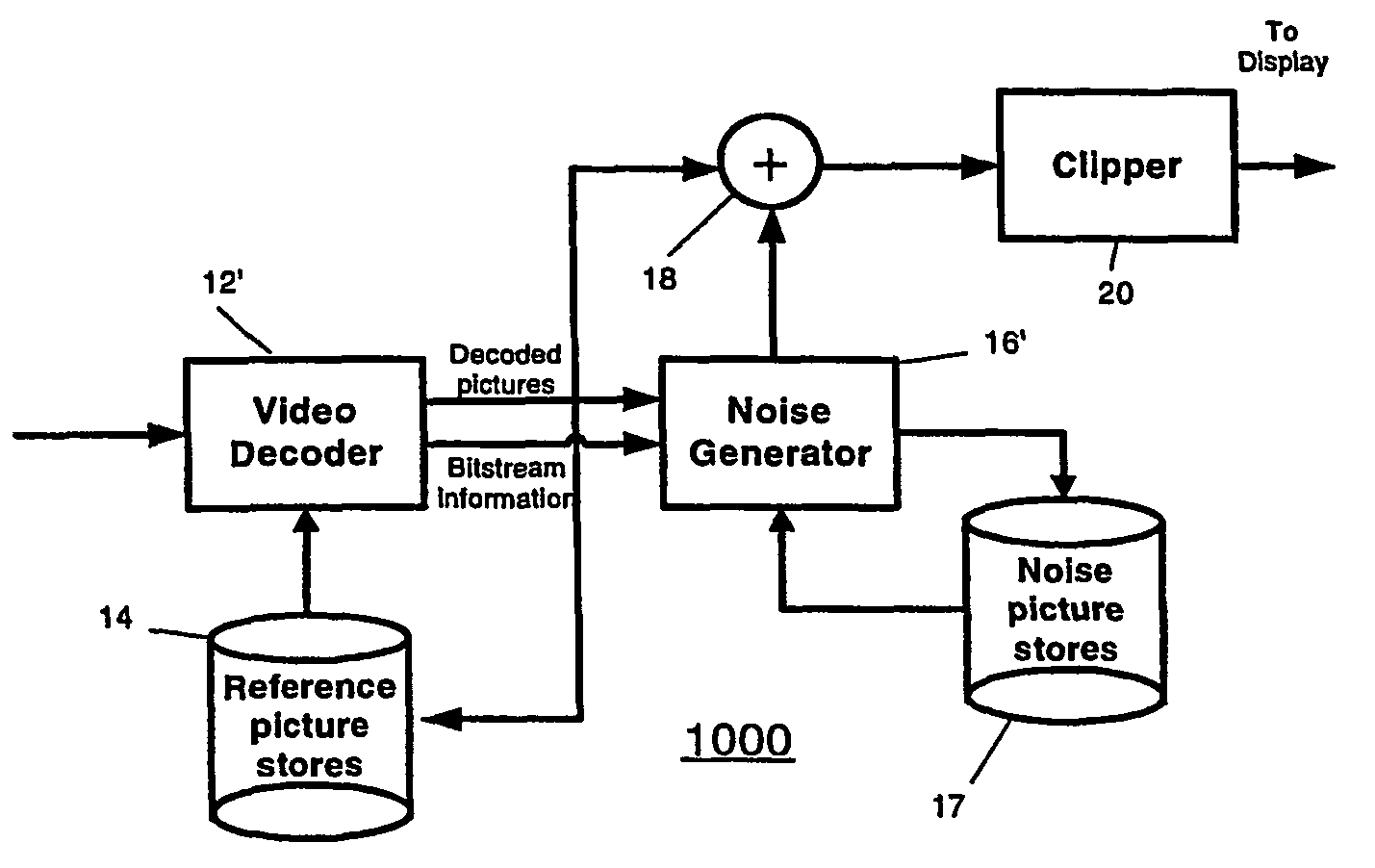Video comfort noise addition technique
a technology of noise addition and video, applied in the field of video comfort noise addition, can solve problems such as the disadvantage of prior noise additive techniques, and achieve the effect of reducing artifacts in video streams and reducing large frame-to-frame differences
- Summary
- Abstract
- Description
- Claims
- Application Information
AI Technical Summary
Benefits of technology
Problems solved by technology
Method used
Image
Examples
Embodiment Construction
[0011]In accordance with the present principles, adding a random-noise containing dither signal, to already decoded signal, in an amount correlated to the additive noise of pixels in a prior picture, serves to improve the subjective video quality. FIG. 1 shows a block schematic diagram of a first decoder arrangement 10 for adding noise after decoding. The decoder arrangement 10 includes a decoder 12 for decoding an incoming coded video stream. The design of decoder 12 depends on the compression format employed to code the incoming video stream. In a preferred embodiment, the incoming video stream undergoes compression using the well-known ITU / ISO H. 264 standard. Under such circumstances, the decoder 12 takes the form of a H.264 decoder known in the art. A reference picture store 14 stores pictures decoded by the decoder 12 for use by the decoder in decoding future pictures.
[0012]A summing block 18 sums each decoded picture from the decoder 12 with noise from a noise generator 16. A...
PUM
 Login to View More
Login to View More Abstract
Description
Claims
Application Information
 Login to View More
Login to View More - R&D
- Intellectual Property
- Life Sciences
- Materials
- Tech Scout
- Unparalleled Data Quality
- Higher Quality Content
- 60% Fewer Hallucinations
Browse by: Latest US Patents, China's latest patents, Technical Efficacy Thesaurus, Application Domain, Technology Topic, Popular Technical Reports.
© 2025 PatSnap. All rights reserved.Legal|Privacy policy|Modern Slavery Act Transparency Statement|Sitemap|About US| Contact US: help@patsnap.com



